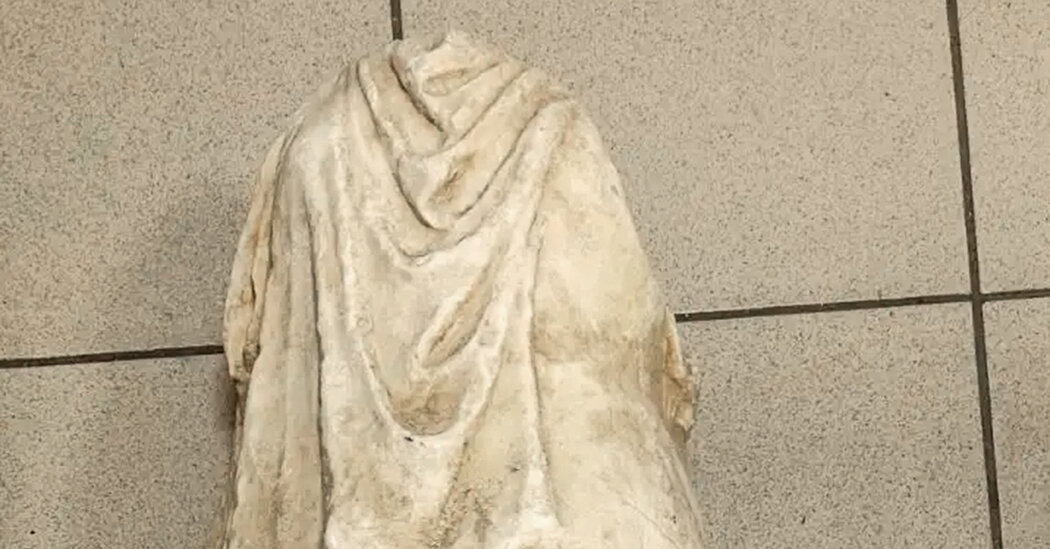
On the evening of January 18, a 32-year-old Greek man came to police with an unusual object he said he found in a plastic bag among garbage bins near the northern city of Thessaloniki.
It was a headless, armless statue depicting a female form in a flowing, draped dress.
Police announced on Wednesday that the statue is believed to date from the Hellenistic period, after the death of Alexander the Great, from around 323 BC to 31 BC.
The find sparked an investigation among Greece’s crime, traffic, antiquities and heritage protection units into its origins and how it might have ended up in the bin.
The discovery of ancient artifacts in surprising places is not uncommon in a country as rich in history and archeology as Greece. Relics are often unearthed during construction projects, such as those in preparation for the 2004 Olympics and subway excavations.
“This is not the first time” that civilians have delivered statues to police stations, Vasilis Tempelis, a spokesman for the Culture Ministry, said in an email Wednesday.
The Ministry of Culture completed a preliminary examination of the statue and concluded that it falls within Greek laws protecting antiquities, police said. A three-person committee will try to do so determine its composition and dating.
The Associated Press said the statue is about 31 inches tall.
Bert Smith, professor of classical archeology at Oxford University and Bilkent University in Turkey, said the statue appeared to be a small-scale figure of a goddess.
“The small size is typical of these marble votives placed to deities in shrines or temples,” he said in an email, basing his observations on official photographs of the statue.
“People prayed to the deities and made dedications to them in thanks for their favor,” Dr. Smith said. “Small statuettes, like this one, would be an expensive dedication from a private individual.”
The figure’s clothing, depicting a full garment of heavy wool, is called a peplum by archaeologists, and was the common dress of the deities. But the arms and head of the statue were lost in the past.
“The arms could tell us what the figure was doing and what attributes it might have carried,” he said. And the head? “It was detached with the arms in the figure’s long subsequent history.”
